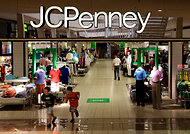The odor rises off the polluted canal — behind the schoolhouse — where nearby factories dump their wastewater. Most of the factories are garment operations, textile mills and dyeing plants in the supply chain that exports clothing to Europe and the United States. Students can see what colors are in fashion by looking at the canal.
“Sometimes it is red,” said Tamanna Afrous, the school’s English teacher. “Or gray. Sometimes it is blue. It depends on the colors they are using in the factories.”
Nearly three months ago, the Rana Plaza factory building collapsed, killing more than 1,100 people, in a disaster that exposed the risks in the low-cost formula that has made Bangladesh the world’s second-leading clothing exporter, after China, and a favorite of companies like Walmart, J. C. Penney and H M. That formula depends on paying the lowest wages in the world and, at some factories, spending a minimum on work conditions and safety.
But it also often means ignoring costly environmental regulations. Bangladesh’s garment and textile industries have contributed heavily to what experts describe as a water pollution disaster, especially in the large industrial areas of Dhaka, the capital. Many rice paddies are now inundated with toxic wastewater. Fish stocks are dying. And many smaller waterways are being filled with sand and garbage, as developers sell off plots for factories or housing.
Environmental damage usually trails rapid industrialization in developing countries. But Bangladesh is already one of the world’s most environmentally fragile places, densely populated yet braided by river systems, with a labyrinth of low-lying wetlands leading to the Bay of Bengal. Even as pollution threatens agriculture and public health, Bangladesh is acutely vulnerable to climate change, as rising sea levels and changing weather patterns could displace millions of people and sharply reduce crop yields.
Here in Savar, an industrial suburb of Dhaka and the site of the collapsed Rana Plaza building, some factories treat their wastewater, but many do not have treatment plants or chose not to operate them to save on utility costs. Many of Savar’s canals or wetlands are now effectively retention ponds of untreated industrial waste.
“Look, it’s not only in Savar,” said Mohammed Abdul Kader, who has been Savar’s mayor since his predecessor was suspended in the wake of the Rana Plaza disaster. “The whole country is suffering from pollution. In Savar, we have lots of coconut trees, but they don’t produce coconuts anymore. Industrial pollution is damaging our fish stocks, our fruit produce, our vegetables.”
Bangladesh has laws to protect the environment, a national environment ministry and new special courts for environmental cases. Yet pollution is rising, not falling, experts say, largely because of the political and economic power of industry.
Tanneries and pharmaceutical plants are part of the problem, but textile and garment factories, a mainstay of the economy and a crucial source of employment, have the most clout. When the environment ministry appointed a tough-minded official who levied fines against textile and dyeing factories, complaining owners eventually forced his transfer.
“Nobody in the country, at least at the government level, is thinking about sustainable development,” said Rizwana Hasan, a prominent environmental lawyer. “All of the natural resources have been severely degraded and depleted.”
Less than two miles from the site of Rana Plaza, the Genda primary school has a student body made up mostly of the children of garment workers. Golam Rabbi, 11, who is the top-ranked student in the third grade there, lives with his mother and two younger brothers in a single room. The boys use price tags collected from factory floors as makeshift playing cards.
“The school always smells,” Golam said. “Sometimes we can’t even eat there. It is making some kids sick. Sometimes my head spins. It is hard to concentrate.”

Julfikar Ali Manik contributed reporting.
Article source: http://www.nytimes.com/2013/07/15/world/asia/bangladesh-pollution-told-in-colors-and-smells.html?partner=rss&emc=rss


